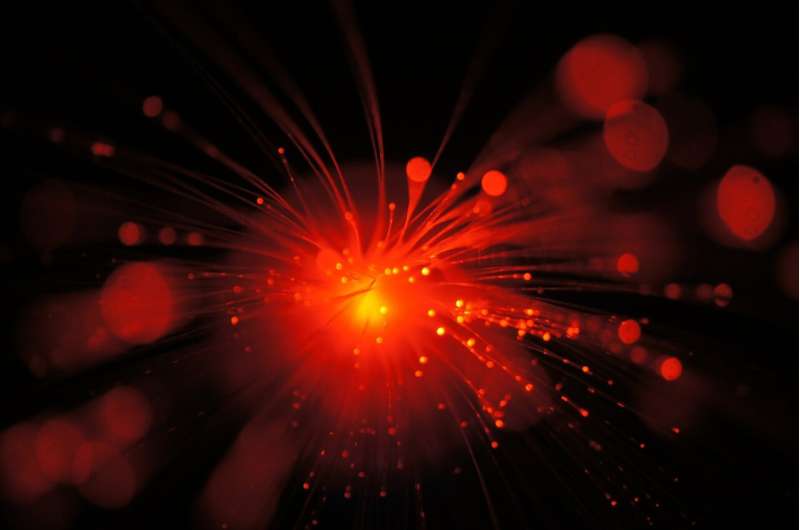Laser solitons: Theory, topology and potential applications

In almost all situations, even in a vacuum, light cannot travel endlessly without dissipating. Pulses of light known as solitons that propagate along fibres for long distances without changing their shape or losing focus have found applications in data transmission, but even these gradually dissipate unless the medium they travel through has ultra-low absorbance. Nikolay Rosanov of the National Research University of Information Technologies, Mechanics, and Optics (ITMO), St. Petersburg, Russia and his team have been working on a solution to this problem—laser solitons—since the 1980s; a colloquium paper summarising their recent work in this area has now been published in The European Physical Journal D.
Rosanov and his group began their work with computer simulations, suggesting that it was theoretically possible to produce a stable soliton in a wide-aperture laser if it was stabilised by external radiation. This prediction was soon confirmed experimentally, and the group has studied these so-called dissipative solitons ever since.
Most recently, the researchers have demonstrated theoretically that it is possible to create such solitons without the use of coherent and stable external radiation. Using parallel programming on high-performance supercomputers, they first modelled a light pulse that is localised in one dimension (a 1D soliton) before extending their technique to model solitons in two and then three dimensions. These three-dimensional solitons have a complex internal structure with distinctive topologies; these have been given descriptive names such as 'apple', 'trefoil' and 'Solomon knot' and they have been shown to merge.
There are still questions for Rosanov and his colleagues to answer before their theory can be put into practice. Once it has been, however, the stability of these solitons and of their topology suggests potential applications in storing digital information. It is by no means impossible that we could, one day, use computers that have laser soliton arrays in place of today's hard disks.
More information: Nikolay N. Rosanov et al, Laser Solitons in 1D, 2D and 3D, The European Physical Journal D (2019). DOI: 10.1140/epjd/e2019-100064-1
Journal information: European Physical Journal D
Provided by Springer


















